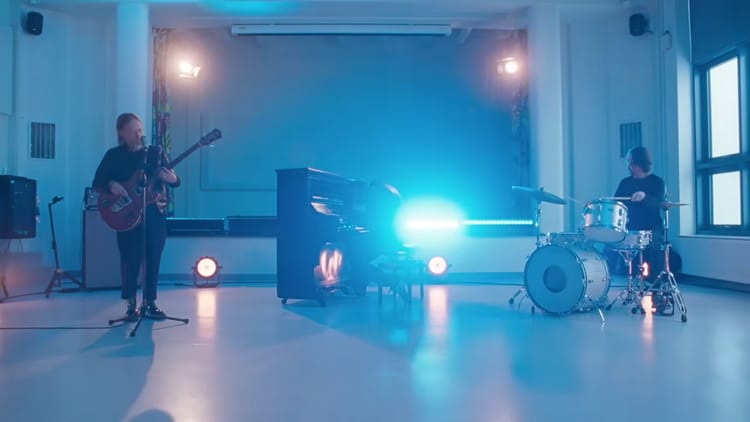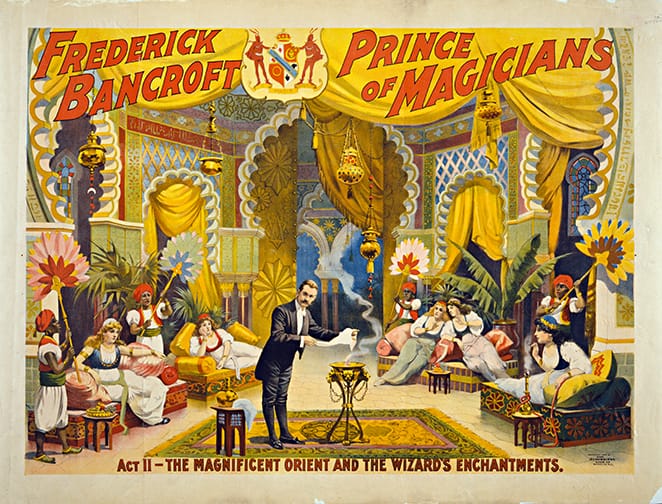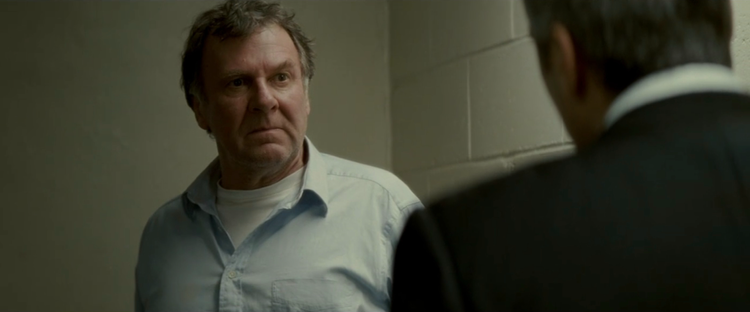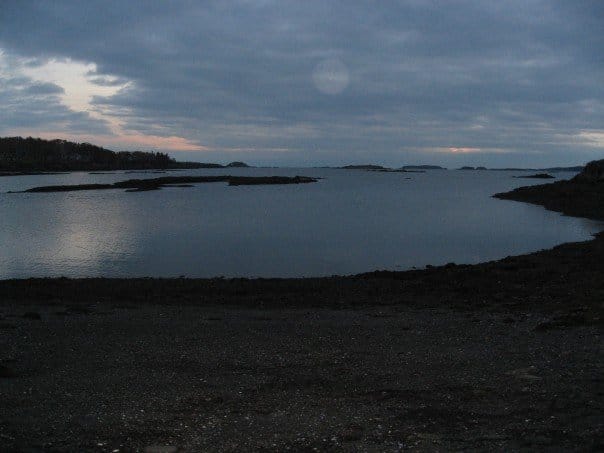"Don't Worry Darling" Reviewed
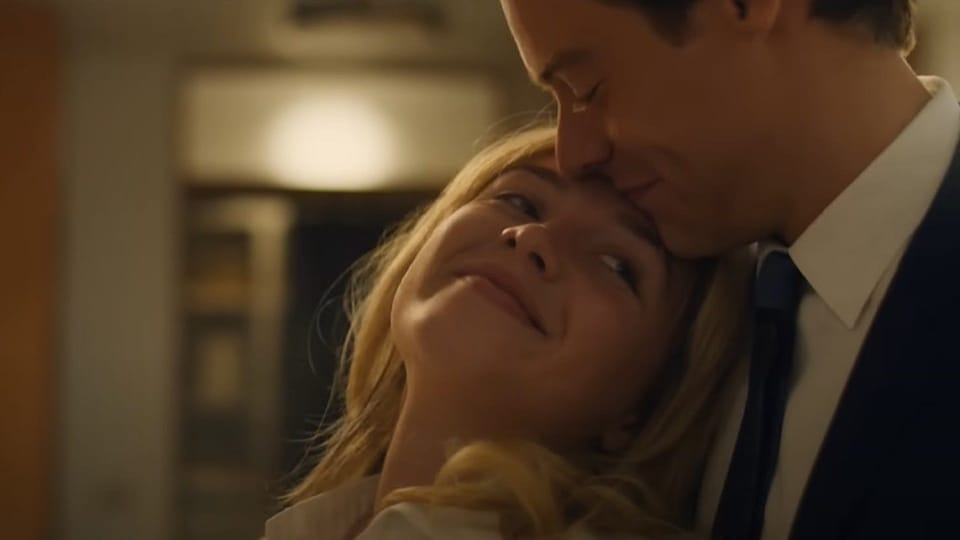
Review: Don’t Worry Darling
The protagonist of Don’t Worry Darling is named Alice. At one point, she wears a blue-and-white outfit, complete with headband atop her blonde hair, while encountering eerie twins. Above her, flags advertise her home community of Victory, though the Vs are styled to look distinctly like Ws.
It may be that I’m overthinking this. But it seems more likely to me that this is exactly the level of subtlety aimed for by the store-brand surrealist feature-length Twilight Zone that is Don’t Worry Darling.
Alice (Florence Pugh) is a housewife living in an atomic-age planned community located in the middle of the desert. Alongside her devoted husband Jack (Harry Styles) and their gaggle of neighborhood friends, the couple drinks and laughs the evenings away. In the morning the husbands get into their cars and drive as a fleet towards a tower atop an outcropping in the sand where–we’re told–they spend the day doing highly classified but assuredly important work under the command of Frank (Chris Pine), local impresario/cult leader, who extemporizes regularly on the ambiguous “mission” of this “family.” At the outset, the community is on edge due to the erratic behavior of neighbor Margaret (KiKi Layne) who’s suffering an apparent episode of paranoia, causing increasingly outrageous disturbances as she demands details on the town’s mission. And it isn’t long before Alice begins suffering seeming delusions of her own, leading her to question everything about her reality.
Don’t Worry Darling has the plot structure of a campfire story. Despite a handful of notable supporting figures (director Olivia Wilde pulls double duty, playing Alice’s next door neighbor and confidante, while comedian Kate Berlant gets ample comic mileage out of her particular brand of anxious discomfort), this is essentially a one-character story, and the plotting consists of little more than a chain of mounting pressures upon Alice, who goes from noticing small oddities in reality–a dozen eggs all happen to be hollow–to encasing her head in plastic wrap with remarkable swiftness. This is the story of a woman on, and then over, the edge, and at least plot-wise, it’s not a story about anything beyond that.
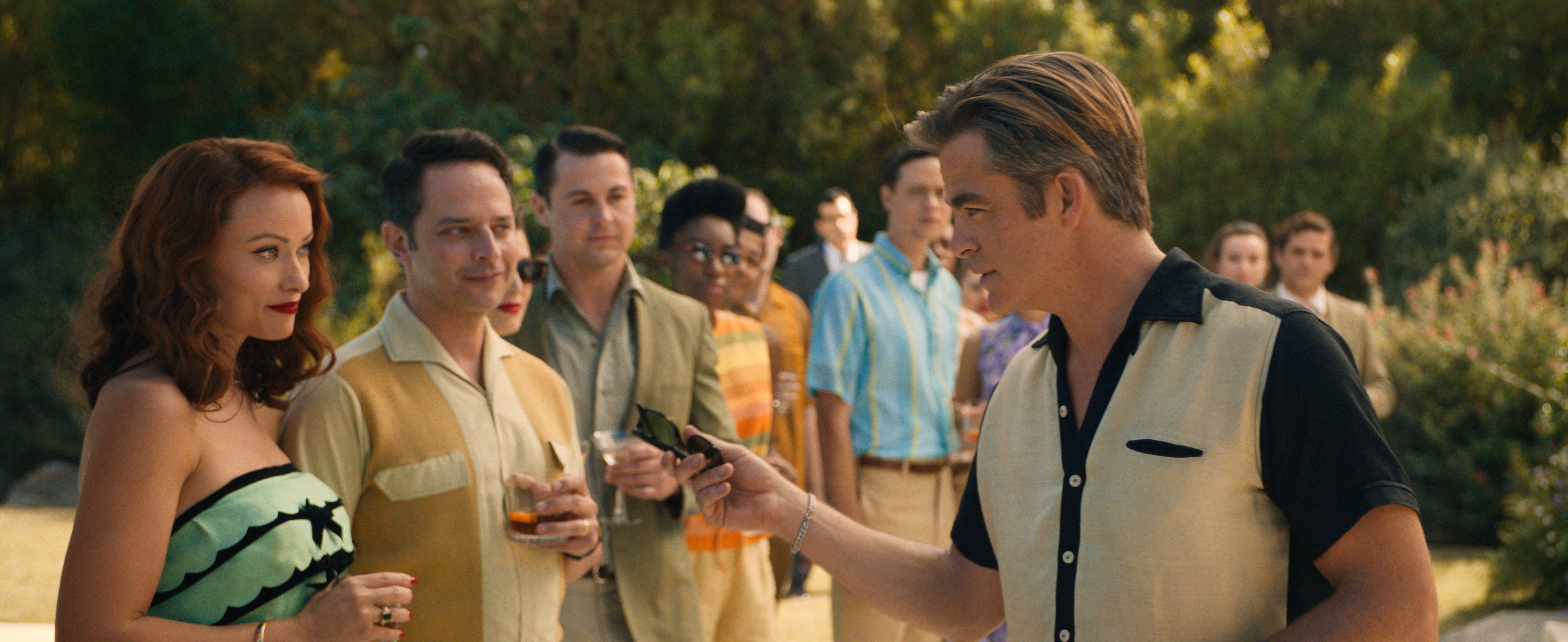
Throughout Don’t Worry Darling, I found myself thinking most often of M. Night Shyamalan’s The Village. Both stories concern isolated communities of yore operating on rigid rules handed down by officious leaders, and much like The Village, it’s hard not to suspect that Don’t Worry Darling is hurtling towards a Big Reveal as to What’s Really Going On. In fact, to use the term “suspect” would be to insult the audience’s intelligence; there could be nothing clearer than the fact that Don’t Worry Darling is cruising towards a twist. The film practically begs the viewer to play “guess the ending,” and it yields a hollow viewing experience. The dramatic structure isn’t substantially different from that of a great many perfectly satisfying Twilight Zone episodes–a character lives in a world clearly operating on an unstable reality and the viewer notes the aberrant while counting down to the shock ending–but what works at 30 minutes is tedious at 122 (there’s a reason nobody ever liked the hourlong Twilight Zones).
The performances run the gamut from grating (Nick Kroll as a braying friend of Jack’s) to utterly anonymous (Styles as a glowering Ken Doll) to surprisingly effective (Pine, playing his innate slick charm like a finely tuned instrument), but this is Florence Pugh’s showcase, and the film rests on her shoulders. Fortunately, she’s more than up to the task. By the end, I found myself unexpectedly caught up in the drama of whether or not Alice would make it through the story intact, an effect that must be chalked up entirely to Pugh’s talents. Goodness knows the screenplay–credited to Katie Silverman and Carey and Shane Van Dyke–gives her perilously little to work with, and based on the wide-ranging effects of the remainder of the performances, it might not be entirely apt to chalk the tension up to Wilde’s hand on the steering wheel. Instead, it’s another testament to Florence Pugh as one of the most remarkable performers of her generation, capable of making even something as tedious as this take flight.
The twist ending of Don’t Worry Darling begs to be talked about; it’s taking every ounce of my own willpower not to dive in right now, particularly given its shocking combination of baffling implausibility and utter spiritual putridity all operating under the guise of topical commentary. This, it seems to me, is a substantial part of the film’s problem. There’s something essentially disposable about movies that offer no particular pleasures save guessing a twist, and though there’s something enjoyably inane about this particular reveal–it’s destined to provide fodder for a great many bad movie podcast discussions in the years to come–even the urge to offer a breathless, or revolted, Can you believe what we just saw? shouldn’t be intriguing enough to justify sitting through two hours of a terribly worrisome cinematic darling.
Sundry Ephemera
My wife and I recently finished the third season of Trying, an AppleTV+ show that may just be my favorite show on TV. If you’re not watching it–and, based on the absolutely non-existent buzz I see surrounding it, that seems like a safe bet–the show concerns a Camden Town couple, Jason (Rafe Spall) and Nikki (Esther Smith), who want to be parents. It doesn’t sound like much to build a show around, but the creative team has done a remarkable job crafting three seasons of consistently escalating narrative out of that dilemma. After earlier seasons concerned a failed fertility journey and a struggle to enter the adoption system, the third season saw Niki and Jason finally matched with two foster children, a story that played out alongside parallel plots for the sterling ensemble the series has by now built out for itself.
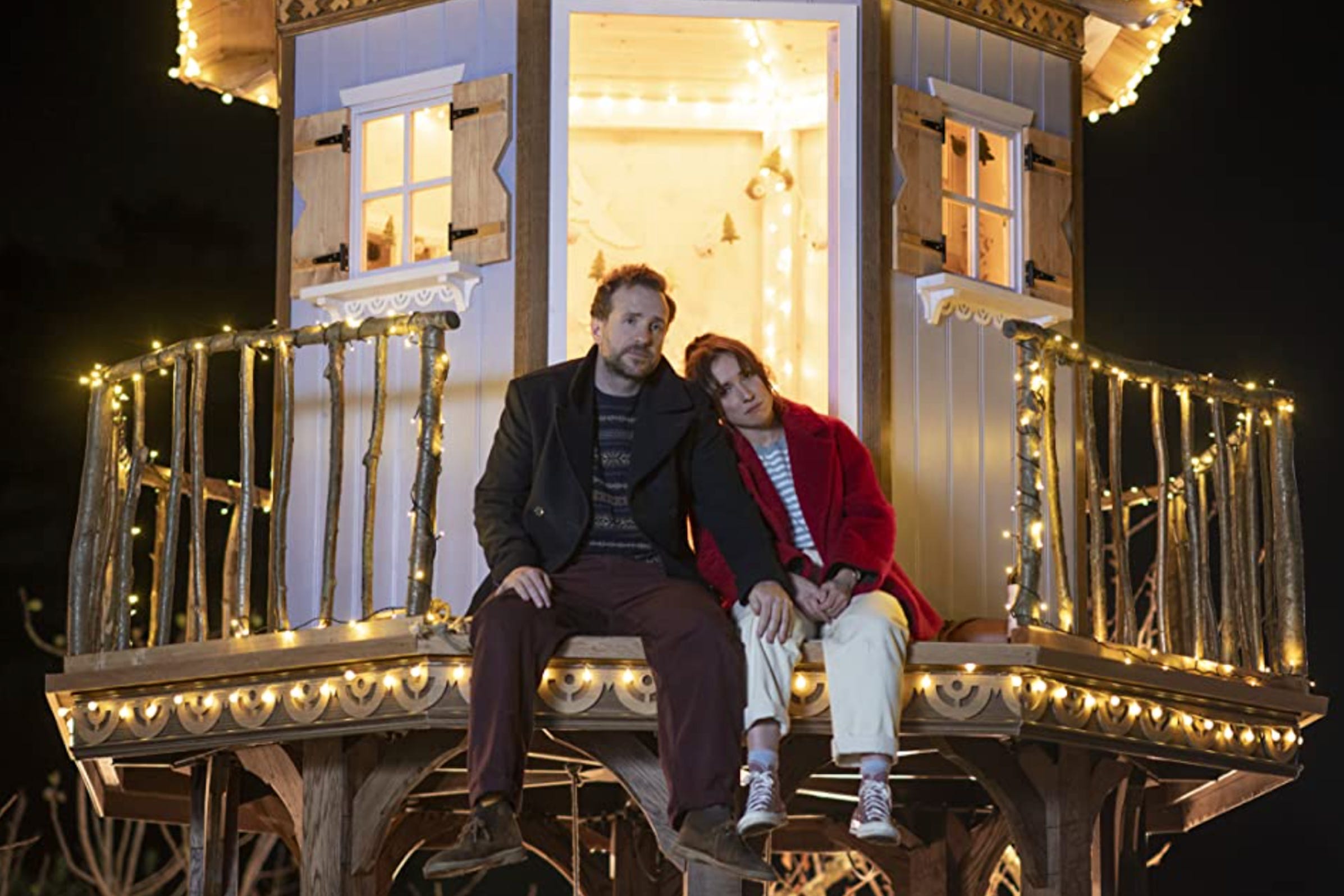
Trying is a show designed to get you–to use a probably archaic online phrase–right in the feels. It’s the kind of show that ends each episode with a montage of all the characters experiencing little codas to the day’s events while yearning acoustic music warbles on the soundtrack. But that sentimentality is never mawkish; it strikes me as totally earned, based largely on the power of Spall and Smith’s chemistry. “We have a good love,” one insists to the other in the season finale, and after a cumulative 24 half-hour installments, it feels true. I’ll admit to finding the third season maybe a little excessively plotty, and its resolution a tad neat, but they’re small prices to pay for a show that’s so insightful, genuine, and very funny.
We also finished the first season of A League of Their Own, and I sure hope it’s the first of many. The movie itself–which, as I’m sure you know, concerns the 1940s-set exploits of a team in the All-American Girls Professional Baseball League–is ripe for serialization, and co-creators Abbi Jacobson, who also stars, and Will Graham drape their season (which tells an original story unrelated to the movie) across the convenient narrative clothesline of a baseball season. But this is not necessarily a show “about” baseball; the game serves more as a vehicle for the characters and their journeys, the majority of which have to do with queer identity.
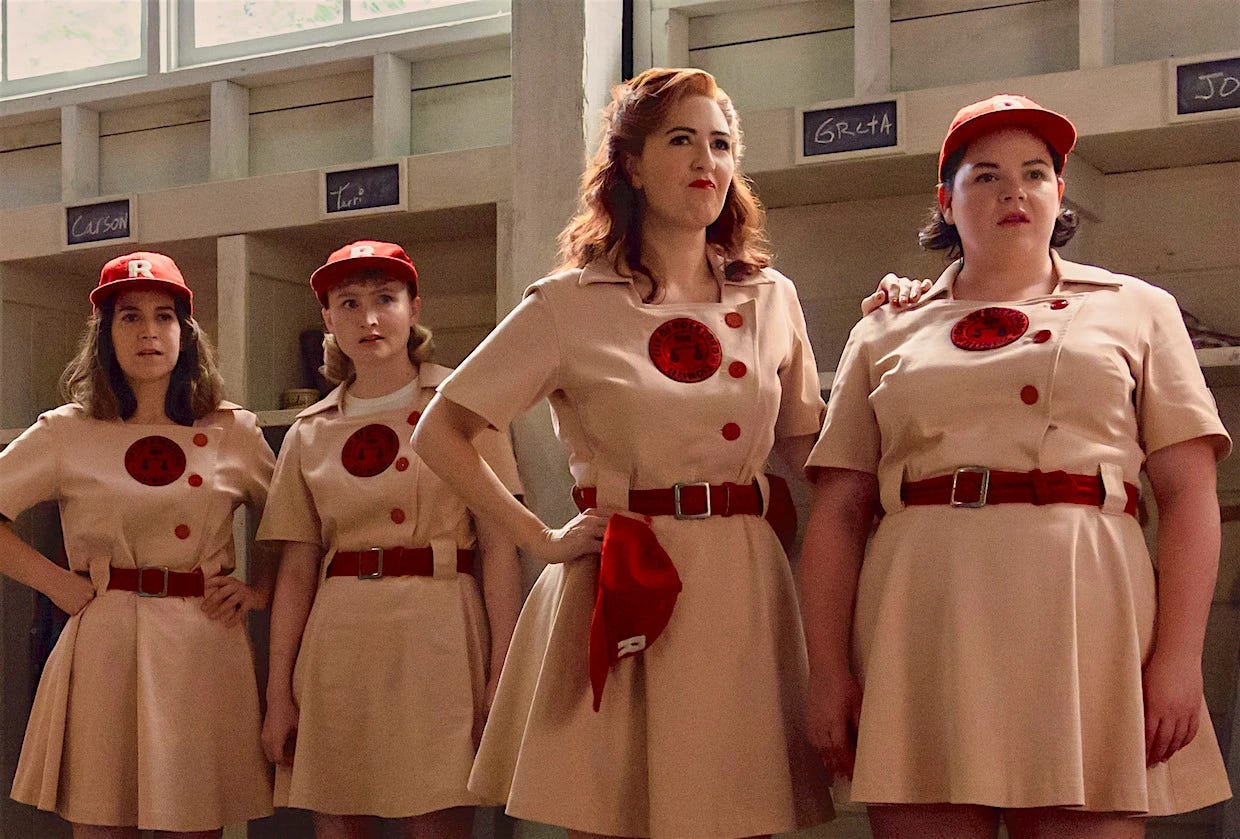
While this makes for some bleak moments given the usually violent response to homosexuality in the story’s era, it’s refreshing how much room A League of Their Own makes for joy amid the prejudice. It’s a love story, and a story of self-actualization, and it’s really damn good. I took slight issue with the anachronistic tone of the dialogue–this is a show set 80 years ago in which everyone leans on the tone and phrasing of today–which took me out of things from time to time, but I can chalk it up to an exciting show trying unusual things. There isn’t much out there like this one, and I’m waiting anxiously to find out whether we’ll get any more.
Oh Yeah, Also…
In the time since the last issue of this newsletter, I signed a contract to write another book with Wallflower, the good folks publishing my book on Paul Thomas Anderson next spring. The new book is going to be called When I Paint My Masterpiece: Bob Dylan on Film, and I have 18 months to get it done. As a result, this newsletter is going to shift, at least for now, into a more “sporadic” mode rather than a “weekly” one. If a new release piques my interest, I’m writing about it and sending it your way–I simply had to see and write about Don’t Worry Darling, and I’ll be writing about Blonde next week (God help me) and Tár the week after that. There’s a lot to get excited about during the fall and winter so you’ll hear from me plenty, but if I miss a week here and there, blame Bob Dylan.
Had a blast working with my good friend Frank Falisi on his essay about Todd Haynes’ essential The Velvet Underground, as well as Julia Gunnison on her piece on Sandi Tan’s Shirkers, both for the Time Travel issue of BW/DR.
In this week’s episode of What a Year!, Ryan and I covered I’m Not There and In Rainbows, and then I talked through Lindsey Buckingham’s Live at the Bass Performance Hall DVD with Carrie Courogen. The first segment may be my favorite one we did as I finally got to dive deep on Todd Haynes’ abstracted Bob Dylan biopic, a movie I’ve studied to the point of atomization.
